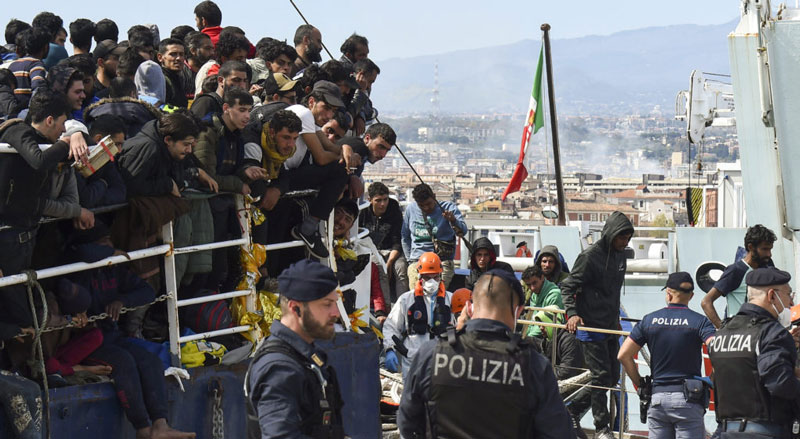As a leading news source, we are deeply concerned about the recent surge in illegal immigration in Italy, which has prompted the government to declare a state of emergency. In this article, we will examine the root causes of this crisis, its impacts on society and the economy, and the measures that have been taken or proposed to address it.
Causes of Italy’s Immigration Crisis
The immigration crisis in Italy has been fueled by a combination of push and pull factors. On the push side, we have the poverty, violence, and instability in the migrants’ countries of origin, such as Libya, Tunisia, and Sudan. On the pull side, we have the perceived opportunities and benefits in Italy, such as jobs, welfare, and social mobility. Moreover, the proximity of Italy to Africa and the Mediterranean Sea has made it a gateway for migrants seeking a better life in Europe.
However, the immigration crisis has also been aggravated by some structural factors in Italian society and the economy. For instance, the high unemployment rate among young Italians has created a perception that immigrants are taking away jobs that should go to locals. Similarly, the lack of affordable housing and social services has led to a competition for scarce resources between natives and foreigners. Additionally, the fragmented and inefficient immigration policies and institutions in Italy have made it difficult to manage and integrate the inflow of migrants, leading to a sense of chaos and insecurity.
Impacts of Italy’s Immigration Crisis
The immigration crisis in Italy has had far-reaching impacts on various aspects of society and the economy. Some of these impacts are positive, such as the cultural enrichment and diversity that immigrants bring to Italy. However, many of these impacts are negative, such as the strain on public services, the rise in crime and insecurity, and the erosion of social cohesion.
For instance, the healthcare system in Italy has been overwhelmed by the influx of migrants, who often suffer from physical and mental illnesses caused by their difficult journeys and living conditions. Similarly, the education system has been challenged by the need to accommodate and integrate foreign students who often lack the language and academic skills needed to succeed. Moreover, the housing market in Italy has been distorted by the informal settlements and overcrowded slums that migrants often end up living in, which pose health and safety risks for both migrants and natives.
Responses to Italy’s Immigration Crisis
The immigration crisis in Italy has prompted a range of responses from the government, civil society, and international organizations. Some of these responses are aimed at reducing the inflow of migrants, while others are aimed at managing and integrating the existing migrants.
One of the main measures that the Italian government has taken is to tighten border controls and crack down on the smugglers and traffickers who exploit the migrants. For instance, the government has deployed naval patrols in the Mediterranean Sea and signed agreements with other countries to prevent the boats from leaving their shores. However, this approach has been criticized for its inhumanity and inefficiency, as it often leads to the interception and detention of migrants in overcrowded and unsafe centers, where they are exposed to abuse and exploitation.
Another measure that the Italian government has taken is to increase the deportations of illegal immigrants, especially those who have committed crimes or pose security risks. However, this approach has also been criticized for its lack of due process and respect for human rights, as it often leads to the expulsion of vulnerable individuals who have legitimate claims for asylum or protection.
In addition to these measures, there have been many civil society initiatives and international projects aimed at providing humanitarian assistance, legal aid, and social integration to the migrants. For instance, some NGOs and charities have set up rescue missions, shelter homes, and language classes for the migrants, while some international organizations have funded development projects in the migrants’ countries of origin and transit, in order to address the root causes of migration and create alternatives to the dangerous and illegal journeys.
In conclusion, the immigration crisis in Italy is a complex and multifaceted issue that requires a comprehensive and sustainable solution. While the government has a duty to enforce the law and protect the borders, it should also respect the human rights and dignity of the migrants, and work with civil society and the international community to find a long-term solution that addresses the root causes of migration and promotes social integration and economic development. As a news source, we will continue to monitor and report on this issue, and provide our readers with accurate and reliable information that helps them understand the complexities and nuances of the immigration crisis in Italy and beyond.
Free Speech and Alternative Media are under attack by the Deep State. Real News Cast needs reader support to survive. Please Contribute via GoGetFunding



